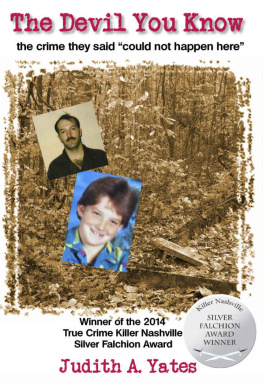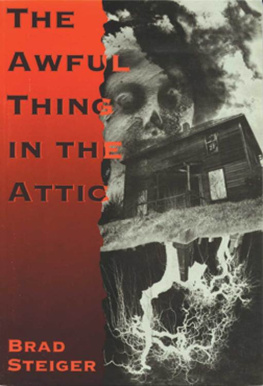A percentage of book sales will go to a nonprofit organization which funds cancer prevention, chosen by the Maddux family, in memory of Brad. The organization is Living Beyond Breast Cancer (LBBC).org)
It is hoped if one child can be saved, if one child killer can be stopped, Brad did not die in vain.
EARLY MORNING, MARCH 10, 1990
The patch of woods stood about four miles from the man s house. He pulled his truck off of the blacktop highway onto a gravel road called 1300 S., only about a half-mile from a little town called Alert, Indiana. Once a thriving railroad town, Alert now consisted of just a few streets. Something rattled in the truck as the tires hit the gravel. It was a shovel.
The truck rolled along and turned between two large, square pillars onto a smaller gravel road. A thick fog choked the night air and obscured his view. The truck crawled, and then it made a U-turn to come to a stop. The man sat in the cab for a moment, listening to his own breathing, then looked about, checking his surroundings, although he knew no one followed him. When he cut the headlights, stillness and darkness enveloped the truck. The slight rumble of the engine and the humming of the heater became distant in his ears as he inhaled. He looked at his hands. They looked no different. Shouldn t they? He looked at himself in the small rearview mirror. Shouldn t he look different? Perhaps a strange light of deception or guilt in his eyes?
The man looked back into the bed of his truck at the dark shape that lay there. He felt no emotion. He only felt as if he should get out and get to work. The task was simple: dig a hole, bury the bundle, throw some stuff away, and get back home.
The man sitting in the truck fit the profile of a child murderer, according to a study conducted by the Bureau of Justice entitled, Child Victimizers: Violent Offenders and Their Victims. According to the study, the number of child murders per year grew rapidly between 1984 and 1993. The man who sat in the pickup truck in the woods that night did not know those statistics. Nor, others such as law enforcement, the courts, and the families and friends report later, did he seem to care.
Some time later, the man drove out of the woods. He experienced a problem leaving, the truck tires were bogged down in the mud, and needed to gas it and get away from the woods. He unwittingly left tire tracks in the mud. He did not know it at the time, but a shoe print also betrayed his presence, left behind in the dirt. One more thing remained behind him: the bundle in the back of his truck was gone. Now he needed to go somewhere to wash the blood out of the back of the truck. The fog swirled around the truck, and he could feel the tires hit the blacktop again. Now the gravel and dust did not mix with the fog and distort his vision.
Not too far away from where he rolled to a halt at a stop sign, a family slept. Only a few hours later, they would be frantically calling the police to find their missing little boy.
It took place all over America, but tonight it happened in a tiny town called Westport, Indiana, where things like that just didn t happen.
2 WESTPORT
The United States Government eagerly acquired land in 1819 via treaties that they made with the Native Americans, whom they called Indians. The Indians did not quite understand how one could own land, but they humored the pale-faced men who smelled strange and, at times, acted worse than their scent. In Indiana, The Indian Treaty of St. Mary s granted Indiana a tract of land known as The New Purchase. Two families settled in this region: the Fugits and the Griffiths. A populated area emerged from The New Purchase in 1821 and became known as Decatur County. Commodore Stephen Decatur was a Navy hero who led and survived many amazing battles, but who died from a gunshot wound inflicted in a dual. Eventually Decatur County would swell to a population of about 25,000, but that was in the distant future.
In the very south of Decatur County, Westport, nestled in the far southern tip of Decatur County, became an official town on March 23, 1836, when two enterprising men laid out a plat of twenty lots. Even their names sounded enterprising, like something out of a story by the author H. H. Munroe, or Saki. Mr. Hockersmith Merryman and Mr. Simeon Sharp had a vision; people already lived around the area soon to be known as Westport, but it could become a successful town. Three log huts sprang up and a town, of sorts, emerged. The townspeople raised the first frame building, the pounding of a hammer was an unfamiliar sound to the deer, raccoons, and other creatures that previously lived on the land undisturbed by man. The second frame building followed and, according to Westport s own town history, owner Noah Merryman kept a few groceries and plenty of whiskey.
The use and abuse of alcoholic drink would play a part in Decatur County's most heinous crime. But 1990 seemed an impossibly long way away not even yet real, in young Westport s eyes.











